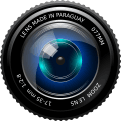Lighting is Key
Good lighting is essential to capturing great pet photos. Natural light is the best, so try to take photos outside during the day or in a room with large windows. If you must take photos inside, avoid using a flash, as it can cause red-eye & harsh shadows. Instead, use a soft light source, such as a lamp or a window with a sheer curtain.
Get on Their Level
You must get close to your pet in order to capture their individuality. This entails squatting, resting on your stomach or hunching over. Although it might not be the most comfortable position, it will significantly improve the quality of your photographs.
Patience is Key
Animals can be unpredictable & may not always cooperate when you want them to. The key is to be patient and wait for the right moment. If your pet is not in the mood for photos try again later. Sometimes it can take a few tries to get the perfect shot.
Keep it Simple
When it comes to pet photography, less is often more. Avoid cluttered backgrounds or distractions that could take the focus away from your pet. Instead, keep it simple & focus on your pet's unique features.
Use Props
Using props in pet photography can be a great way to add some personality to your photos. Toys, blankets & other items can make for great photo props. Just be sure not to overwhelm your pet with too many props.
Use Burst Mode
Burst mode is a feature on most cameras and phones that allows you to take multiple photos in quick succession. This is especially useful when taking photos of pets, as it can be difficult to get them to stay still. With burst mode, you can take multiple shots & choose the best one later.
Edit Your Photos
It's time to edit your images once you've finished taking them. Your photographs' quality might significantly change after editing. Tools for modifying photos are widely accessible, including Adobe Lightroom and Photoshop. There are also a ton of free editing applications for cellphones if you're not familiar with these capabilities.

